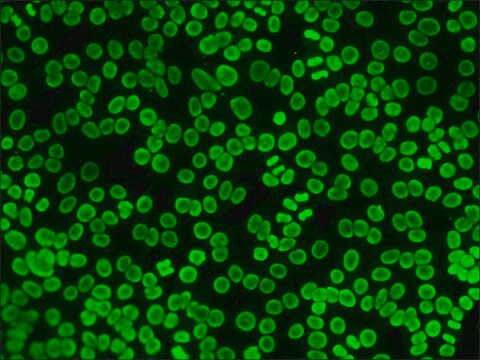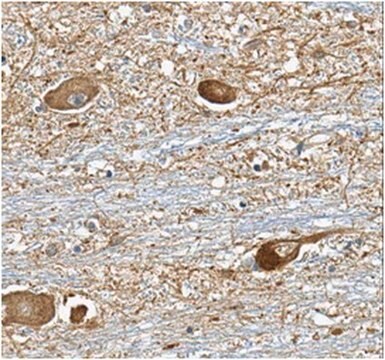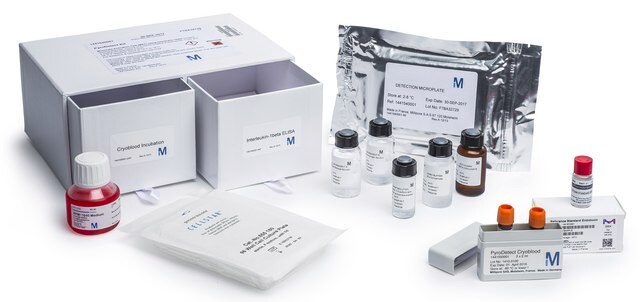F4890
Monoclonal Anti-Rabbit Immunoglobulins–FITC antibody produced in mouse
clone RG-16, purified immunoglobulin, buffered aqueous solution
Synonym(s):
Monoclonal Anti-Rabbit Immunoglobulins (IgG, IgA, IgM)
About This Item
Recommended Products
biological source
mouse
Quality Level
conjugate
FITC conjugate
antibody form
purified immunoglobulin
antibody product type
secondary antibodies
clone
RG-16, monoclonal
form
buffered aqueous solution
should not react with
pig, chicken, bovine, horse, human, guinea pig, turkey, rat, canine, goat, feline, sheep
storage condition
protect from light
technique(s)
immunohistochemistry (formalin-fixed, paraffin-embedded sections): 1:20
indirect immunofluorescence: 1:50 using using chicken fibroblast cells and primary antibody produced in rabbit
isotype
IgG1
shipped in
dry ice
storage temp.
−20°C
target post-translational modification
unmodified
Looking for similar products? Visit Product Comparison Guide
General description
Specificity
Application
- immunocytochemistry
- immunohistochemistry
- immunofluorescence
Physical form
Disclaimer
Not finding the right product?
Try our Product Selector Tool.
Storage Class Code
10 - Combustible liquids
WGK
nwg
Flash Point(F)
Not applicable
Flash Point(C)
Not applicable
Personal Protective Equipment
Certificates of Analysis (COA)
Search for Certificates of Analysis (COA) by entering the products Lot/Batch Number. Lot and Batch Numbers can be found on a product’s label following the words ‘Lot’ or ‘Batch’.
Already Own This Product?
Find documentation for the products that you have recently purchased in the Document Library.
Our team of scientists has experience in all areas of research including Life Science, Material Science, Chemical Synthesis, Chromatography, Analytical and many others.
Contact Technical Service








